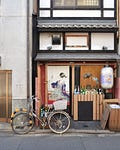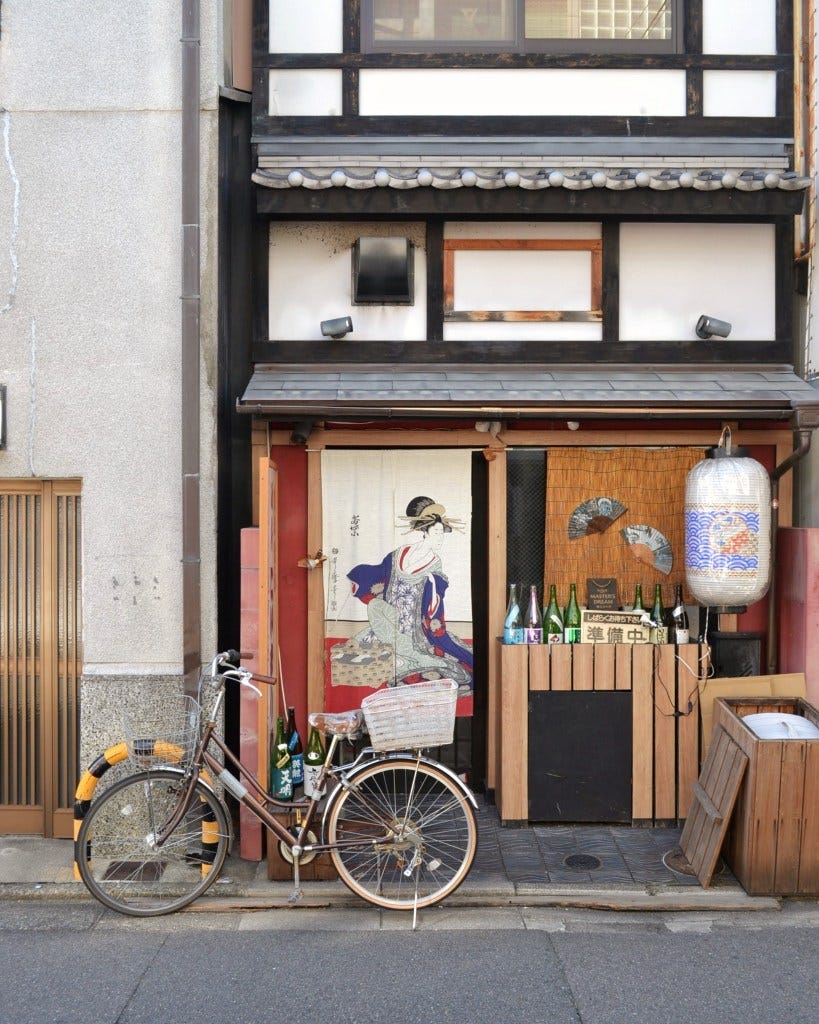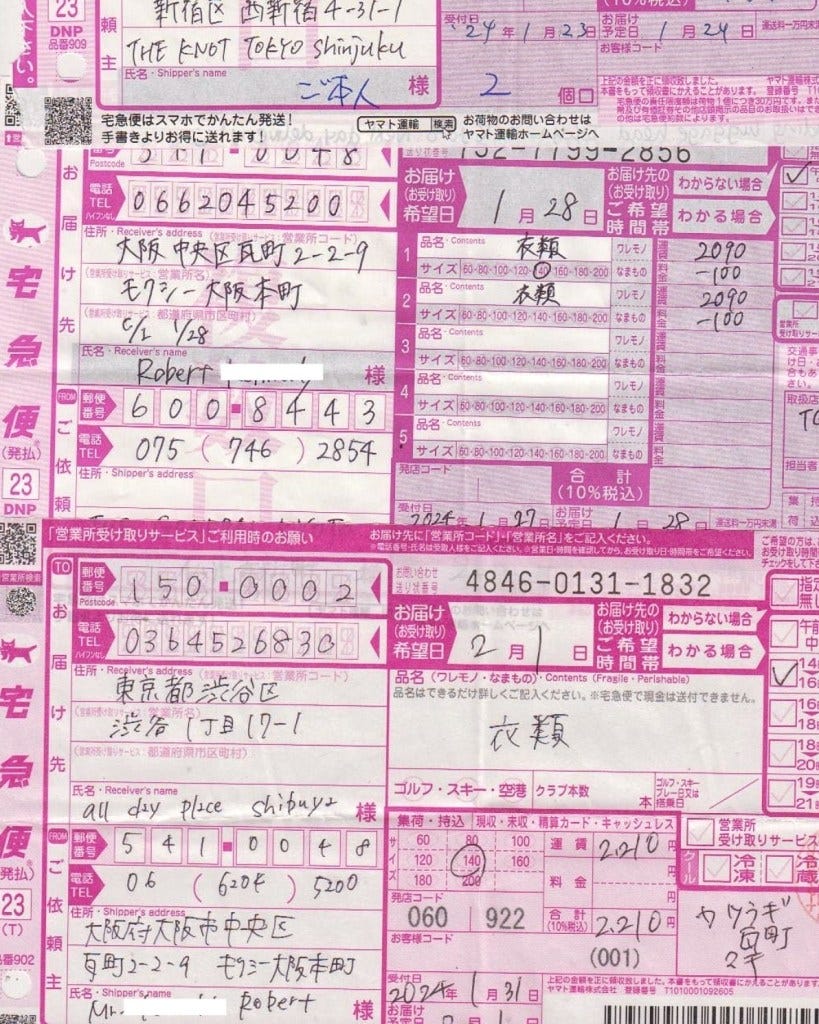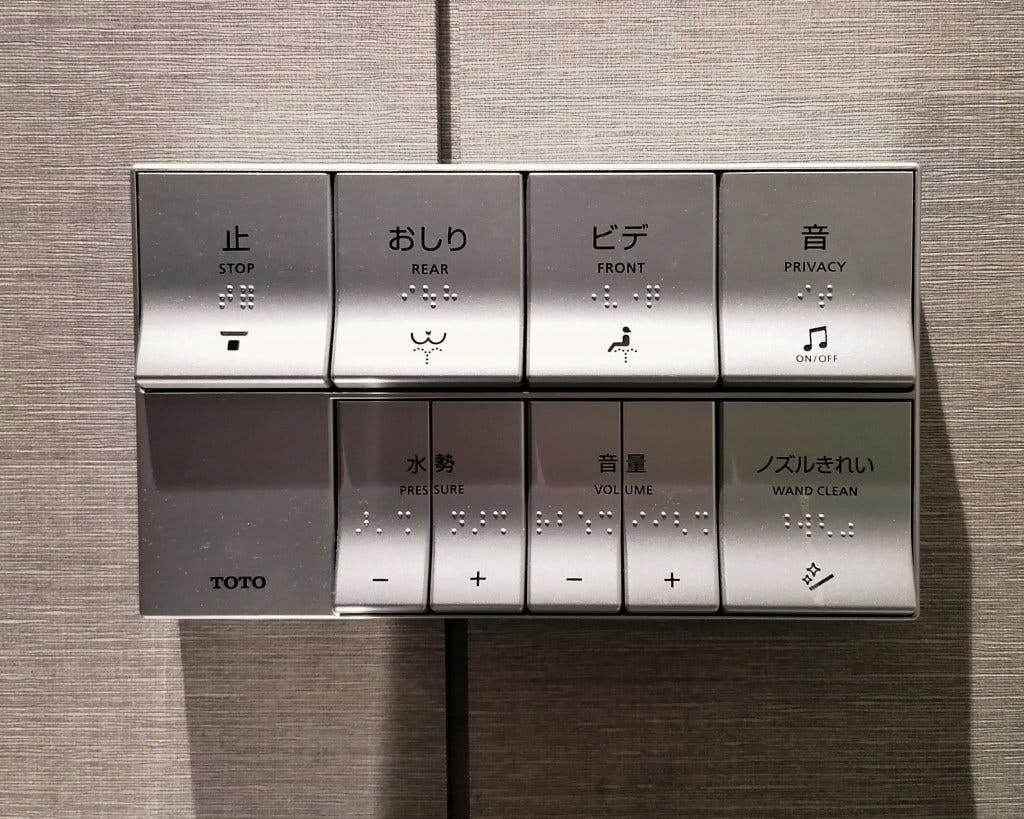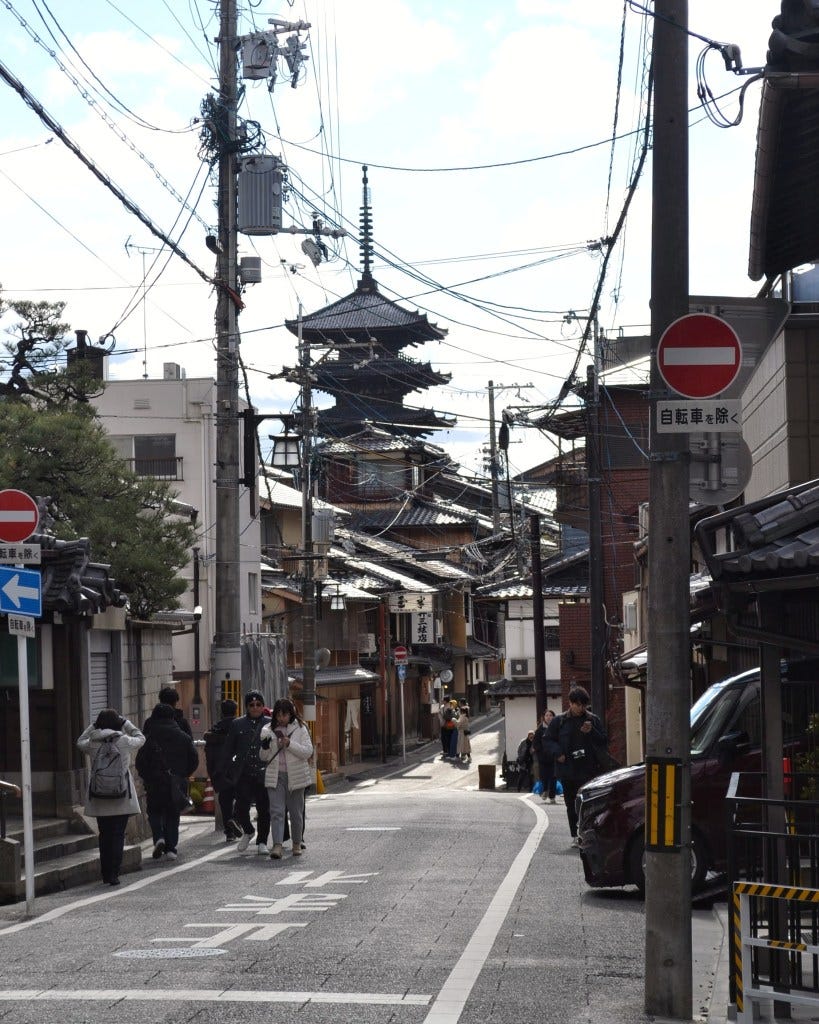Japan Travel Tips | Notes From Our Honeymoon
Kon’nichiwa, friends! Hello!! How the heck are you? I am absolutely BUZZING with excitement to share this post – my first ever Japanese guide! It is with great pleasure that I bring you: Japan Travel Tips | Notes From Our Honeymoon! I’ll be sharing a more detailed breakdown of our itinerary – and many a city guide! – in the coming weeks, but for now, I thought this was a pretty good place to start. I know from personal experience that planning a trip to Japan can be a little overwhelming, so I figured if I shared one – unabashedly, excessively large – post detailing every helpful tidbit of information we gleaned from our trip, then maybe I could make your trip-planning a little easier? That’s the dream anyways!
Fair warning: this is perhaps my longest travel post yet, but I just couldn’t bear the thought of leaving anything out! It initially started out as a smaller post, covering our itinerary and a few of my top tips… But then I started writing it, and it got so long that I realised we needed to dedicate a post solely to all the tips. And when I say all the tips, I mean ALL the tips – I hope you’re ready!
Listed below is every single piece of information we accumulated from our time spent travelling between Tokyo, Kyoto, and Osaka. For easy reading, I’ve divided the tips into different sections: getting to Japan / travel within Japan / internet & communicating / eating in Japan / miscellaneous / cash, currency & costs. Because I had so much I wanted to share – and frankly, because I’m a typical type A! – I’ve also divided each of those sections into smaller subsections.
Let’s just get down to it, shall we?
quick links
getting to japan
– entry requirements
– our flight details
– airport informational tidbits
travel within japan
– getting to/from haneda airport
– getting around japan
– luggage service
internet & communicating
– pocket wi-fi
– getting by with english
– helpful apps
eating in japan
– japanese cuisine
– convenience stores
– vending machines
– food & drink etiquette
miscellaneous
– souvenirs
– japanese etiquette
– japanese toilets
currency, cash & costs
– currency + cash withdrawals
– cash is not king
– cost breakdown of our trip
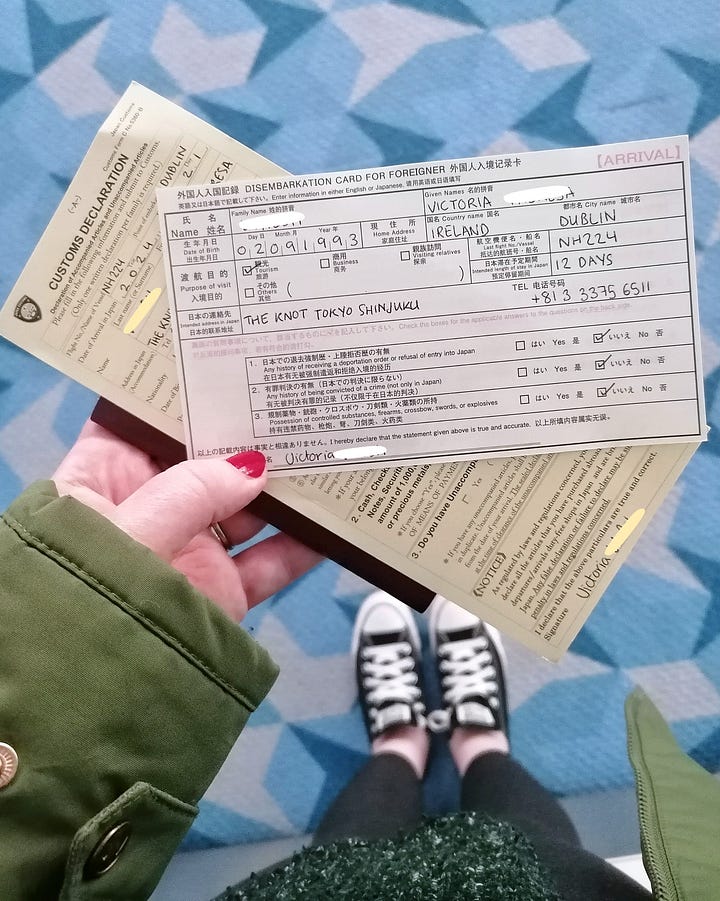
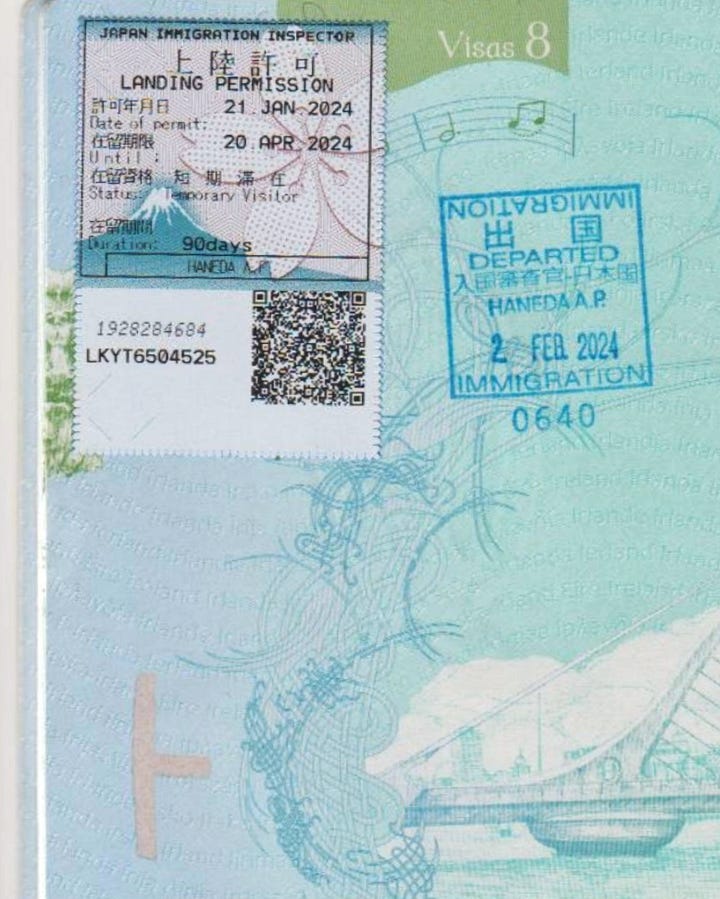
getting to japan
entry requirements
• Irish people do not need a visa to enter Japan unless they’re seeking employment or planning to stay longer for than 90-days. Seeing as we weren’t doing either of those things, entry was very easy for us! If you’re coming from elsewhere, you can check the Japanese Ministry of Foreign Affairs website to see if you need a visa, but most countries don’t.
• on our descent into Tokyo, we were given a disembarkation card and customs declaration form by the flight crew. The information required is pretty standard: name and DOB, reason for visiting, length of stay, address in Japan, and previous convictions or deportations.
• when we arrived in the airport, the customs process was minimal. We queued up to be fingerprinted and photographed by these fancy machines, and then we queued up again to have our passport & forms checked by a customs officer. Said customs officer also stamped our passports with entry/exit dates – which is by far the coolest thing in my current passport! – and sent us on our way. That’s all there was to it!
• if you’re visiting from Ireland, one of the recommendations pre-trip is to register your details with the government in case of emergency. We weren’t initially pushed about doing this – but then the Noto Peninsula earthquake hit just a few weeks before our journey and we figured better safe than sorry! This is the website here.
• we’d been told by someone who had been to Japan previously that they needed a prescription for any medicine they had with them. While we personally didn’t encounter this, I’d rather have been prepared than potentially had any medication confiscated. We got copies of our latest prescriptions from our local pharmacy and carried them together with any meds just in case.
our flight details
• we booked our flights to Japan through Lufthansa, who are partners with All Nippon Airways (ANA), a Japanese airline. Although there were cheaper flights available through the likes of Skyscanner etc., we knew from the beginning that we wanted to book direct with one airline. This was to cover us in case anything happened and we missed one of our connecting flights; if you book with the same airline the whole route through, they have to look after you.
• from Dublin, we flew with Lufthansa to Frankfurt. Our flight was just under 2-hours long, and it was rather nice! Neither of us had ever flown with Lufthansa before, but the bottled water and chocolate bars they hand out sky-side could easily tempt us back!
• from Frankfurt, we flew with ANA to Tokyo Haneda, with a flight time of 13-hours and 10-minutes. Even though we were flying economy class, we both found our journey to be rather comfortable. There was plenty of legroom, the seats reclined a fair amount, and, rather than a blind, the windows have a dimmer switch of sorts – which blew my mind. Added bonus: all of the staff dedicated to the lower-socioeconomic-end-of-the-plane were so nice!
• food-wise, everything was fine/a little strange. The meals were less meal-like, and more here-is-a-tray-of-sustenance. Hot components across our flights were: beef curry with steamed rice, tomato penne with béchamel chicken + carrots, and soy-sauce scrambled eggs with minced chicken and rice; the latter two were mind-bogglingly odd. Cold components consisted of: salad with Parma or smoked duck, noodles, sauteed veggies, potato salad, fruit, and something sweet like packaged cake etc. All of the above came with drinks aplenty: beer, wine, juice, coffee, etc. All in all, not terrible! Pro tip: if you’re flying with ANA, be sure to try their Aromatic Kabusa drink! It’s made exclusively for the airline and it’s like an exotic lemonade!
• entertainment-wise, there was a good selection of things to watch on the flights. New/old movies, TV-shows, flight status and map etc. Husband & I watched Past Lives and The Holdovers together, and I soldiered on alone to watch Elemental for the first time and The Lake House for the hundredth time.
• our return journey was much the same, except we flew from Haneda to Munich, and from there back to Dublin.
• fun fact: over the course of our flights to/from Japan, we flew the whole way around the globe! En route there, we flew over Europe & Asia, but on the way back we flew the opposite way, coming instead over Canada and Greenland! So fun!

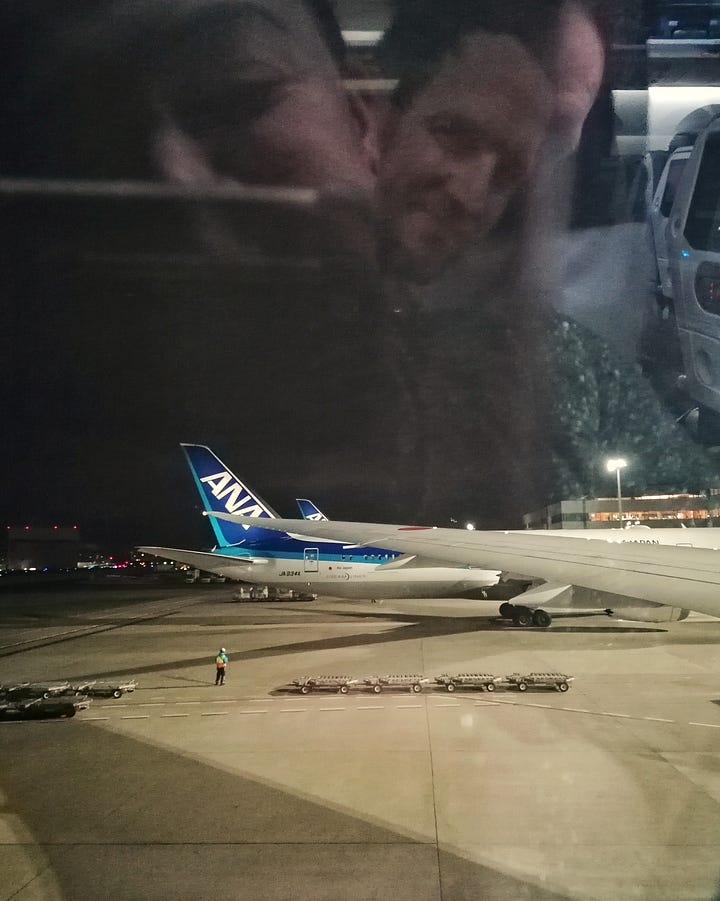
airport informational tidbits
FRANKFURT, GERMANY
• our layover in Frankfurt was 6-hours long, which we thought was just slightly too tight to allow us to go into the city. That said, we took full advantage of our time in Germany by enjoying all the German food: pretzels from Hermann’s, and currywurst + Licher beer from DELI BROS.
• in Frankfurt airport, seeing as we didn’t actually leave the departure area, we didn’t have to go through security again, which was very pleasant.
HANEDA, JAPAN
• we may or may not have arrived at Haneda airport sliiiightly too early for our flight out of the country. However! This allowed us to scope out the best souvenirs – more on that below! – and the best places to eat at. We ended up enjoying an airport dinner at SCHMATZ, where we got ourselves into the German mindset by indulging in currywurst, fries & lager. Yum!
MUNICH, GERMANY
• our layover in Munich was much shorter than our one in Frankfurt, a mere 2-hours and 20-minutes. As such, there was only time for a quick heavily buttered pretzel & coffee from Wiener’s – but oh man, we love pretzels!
• in Munich airport, we sadly did have to go through security again. This meant that, even though the alcohol in Haneda airport was depressingly good value, we couldn’t buy a single drop. Maybe it has something to do with the fact that we were re-entering the EU? Sigh.

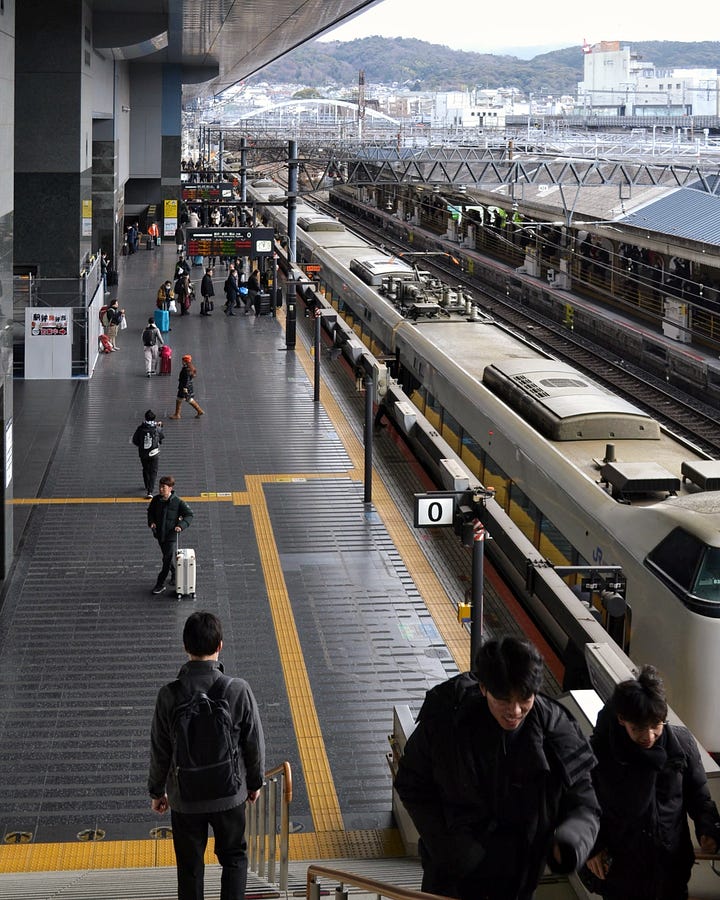
travel within japan
getting to/from haneda airport
Before our trip, a large part of my anxiety revolved around A. landing at night in a totally new and unknown country, B. having to get connecting transport from the airport, and C. not being able to find our hotel due to A. and B. To circumnavigate this issue, we emailed our hotel in Tokyo to ask what the easiest way of getting there was. It seems like the most obvious solution in the world now, but this panic pre-trip caused me many a restless night’s sleep! Would recommend.
• the first leg of our time in Tokyo was spent in Shinjuku, and thankfully the hotel informed us of an almost direct ‘Limousine Bus’ route. A ‘Limousine Bus’, from what we experienced, is essentially the exact same as a normal private bus; but it sure does sound more impressive, no?
• the buses depart from the concourse right outside the arrivals hall. We anxiously wandered along for a little while, trying to figure out which bus to go towards and where to buy tickets etc. before coming upon a ticket machine with the ‘Limousine Bus’ logo. We switched the machine to English using the converter on the upper right hand side of the screen, and bought tickets bound for the ‘Shinjuku Area’. For more information about bus stops and timetables, check out this website. Be warned: the ticket machines are cash only! Our tickets cost ¥1,400 / €8.50 each.
• when our tickets were printed, the departure time and stop number were clearly marked in both English & Japanese (see photo, above), so we were able to relax. After we found the correct stop number, we loitered nearby and admired the military-level of precision that people regard the queues with, before eventually joining our own when the time came. Our bus departed exactly on time and was extremely pleasant. Haneda is only around 25km from the city centre, meaning we arrived at our destination in less than an hour.
• our return journey to Haneda was much the same, except we took the ‘Shibuya Area’ route, which covers just 3 stops before returning to the airport. We bought our tickets from a little machine beside the Shibuya Station [Shibuya Fukuras] stop, and had another pain-free experience. Pro tip: if you’re taking this route back to Haneda, grab a window seat on the left hand side of the bus! We were treated to the most magnificent sunset views over the Shibuya Scramble and Tokyo Port areas on our way out! They were so beautiful, in fact, that I might have even shed a little tear!
• if you’d prefer to get the train, there is a monorail that runs directly from the airport to the station of Hamamatsuchō, where you can switch to other lines that run all over the city. The journey to Hamamatsuchō takes around 20-minutes. For more info, check out the monorail website here.
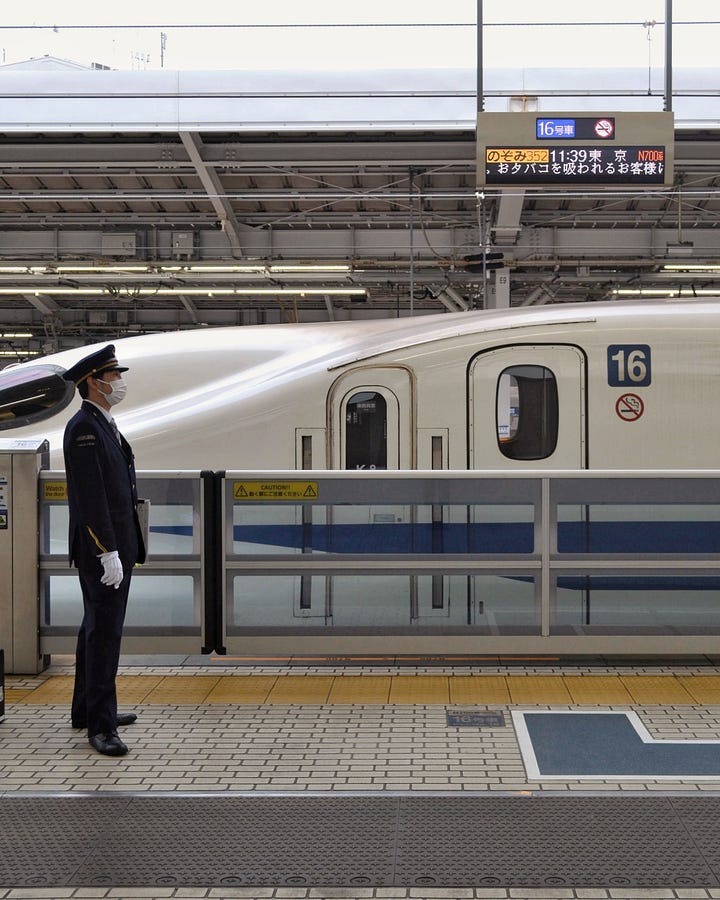

getting around japan
• something to keep in mind if this is your first time visiting Japan: the cities are huge! If, like us, your favourite way to explore a new city is to walk, get ready to clock up the steps! Over the course of our two weeks in town, we did an average of 13,823 steps per day; our biggest day clocked in at 22,306 steps, and our lowest never dropped below 10,000. I mention this not to put you off, but to warn you to bring comfortable shoes!
• Japan has some very well developed subway networks. There are train lines going absolutely everywhere in the cities we visited, and they’re very regular – we never had to wait more than a couple of minutes. Buying tickets at the subway machines was easy once you paid it proper attention; change the machine to English, enter the name of the station you’re going to, and buy your ticket. Be warned: the machines are cash only! Well actually, they’re not – but they only accept Japanese bank-cards, so for all intents and purposes, they are. Pro tip: if you don’t want the hassle of having to buy subway tickets for each journey, get a Suica or Pasmo card. These are rechargeable cards that you can top up & tap as you go, like the Irish Leap Card. We weren’t able to track these down during our visit, but managed just fine without them.
• we used the bus for one excursion in Kyoto, to get to the Golden Pavilion. The bus, naturally, wasn’t as fast a mode of transport as the subway, but it was still good. Bus tickets are bought on board, at the end of your journey. It sounds counterintuitive, but it goes like this: you board the bus, journey to wherever you’re going, and then you pay the fare when you’re getting off. Be warned: the machines are coin only, and they don’t give change!
• for our bigger cross-country journeys, we opted to travel on the Shinkansen, aka the bullet train. We were advised by a lot of people before setting off that we absolutely must get the JR Rail Pass or we’d rue the day. This may have been true in the past, but in November 2023, the cost of the Pass increased by 70%, making it absolutely not worthwhile for us.
• if you’re interested, here’s a little comparison of what we paid for our Shinkansen tickets, versus what we would’ve paid for a JR Rail Pass. For our first journey, Tokyo to Kyoto, we purchased two reserved seats on a Nozomi train – the fastest of the Shinkansen trains. This cost us ¥27,940 / €174.18 in total. For our second journey, Osaka to Tokyo, we again purchased two reserved seats on a Nozomi; costing us ¥29,040 / €183.08 in total. Altogether, that brings our Shinkansen budget to a whopping ¥56,980 / €374.67 for two people. However! A 7-day JR Rail Pass ticket would have set us back ¥50,000 / €329.86 each! *mic drop*. If you’re still unsure whether or not you should get the pass, you can work out your train costs here.
• we bought our Shinkansen tickets on the day of departure, and both times had no problem buying reserved seats for trains due within the next half hour. Non-reserved seats are slightly cheaper, but I didn’t want to risk A. not being able to sit together, or worse B. having to stand for the whole journey. Pro tip: if you’re hoping to see Mount Fuji from the train, be sure to reserve Seat E in any of the carriages! We were blessed with glimpses of the majestic mountain on both journeys, and it was totally amazing.
luggage service
We used a luggage service to send our suitcases from city to city in Japan. This meant that, while trying to navigate the extremely busy train stations and tiny side-streets, we were largely unencumbered. Honestly, it was one of the best decisions we made on our whole trip! Would absolutely recommend.
• here’s the quick version. Pack up your stuff and bring it to the front desk in your hotel. Your current hotel will ring the hotel you plan to move on to. Once your planned hotel confirms your reservation, your current hotel will write you a luggage slip. If your hotel offers this service directly, they’ll weigh/measure your luggage, and charge you whatever it costs. If your hotel doesn’t offer this service directly, they’ll point you to the nearest drop-off point, where instead they’ll charge you. You give them your bags, and then, almost like magic, they’re at your next hotel before you arrive.
• here’s the longer version. You need to get your stuff sent on ahead the day BEFORE you plan to change hotels. We never had any problems and our luggage was never late etc. – but just in case, we packed a spare outfit and valuables in our hand luggage, which we kept with us. The cut off time for next day delivery was different everywhere we sent from, but it was usually around noon. To save ourselves any headaches, we usually packed up and sent our stuff off first thing in the morning before heading out for the day. No harm being too early!
• in order to begin the process, your current hotel needs to verify that you actually are moving on to whatever hotel you say you are. I just looked up the name of our next hotel on Google, passed my phone over to the staff, and then they rang to seek confirmation. The only extra information they needed was the reservation name and arrival date.
• once that’s confirmed, your current hotel will weigh + measure your bags, and kindly fill out a pink luggage slip for each item that’s being shipped. These slips contain: shipping date/time/address, name of sender, and measurements + contents etc.
• if the hotel offers this service directly, they’ll charge you whatever it costs and take the bags. If they don’t offer this service directly, they will send you to the nearest Family Mart, where instead they will charge you and take the bags. Of the four hotels we stayed at, only one offered the luggage service directly from the front desk, but a Family Mart is never further than a block away.
• cost-wise, we found it very reasonable considering how much easier it made our lives. Tokyo to Kyoto cost us ¥4,540 / €29. Kyoto to Osaka cost around ¥3,980 / €25. Osaka to Tokyo cost ¥4,400 / €27. Roughly speaking, it worked out at an average of around €13 per suitcase. Worth! It!
internet & communicating
pocket wi-fi
• public Wi-Fi, while available in some places, is not as readily available as we are used to here in Europe. I can tell you, with absolute certainty, that we would not have been able to survive without our pocket Wi-Fi. If you’re wondering what the heckidy heck that is, allow me. Pocket Wi-Fi is a tiny little device, about the same size as a mobile phone, that you pop in your pocket & use to connect up to 10-devices to the internet. Essentially, it’s a genius invention that means you don’t have to worry about getting a local sim-card or the likes.
• we rented our pocket Wi-Fi from the information desk at Haneda airport, and the brand we got was Town Wi-FiTown Wi-FiTown Wi-FiTown WiFi. There were a couple different package options, but we opted for the 1GB daily limit, which cost us ¥18,000/€115. The sales guy programmed the device for the exact amount of days we’d need it, showed us how to use it, and sent us on our way! It had a battery life of 8-hours, after which time it would need to be charged up again. We were conscious of turning it off to preserve battery when not-in-use, so we never ran out of juice. Two weeks later, we returned our device to the same desk we got it at! Simple! Would recommend.
getting by with english
• pre-trip, we made an effort to learn a couple Japanese phrases, so as not to come across as rude or ignorant. Basic greetings include: Kon’nichiwa/hello, Ohayō/good morning, Konbanwa/good evening. Basic manners include: Sumimasen/excuse me, Onegaishimasu/please, Arigatō (gozaimasu)/thank you (very much). Other words we learned include: Hai/yes, Īe/no, and Kanpai/cheers. It takes no time at all to pick up a few words, and the locals really appreciate the effort! Would recommend.
• obviously, not everyone in Japan speaks English. Staff in hotels generally had a firm grasp of it, but outside of those it was a bit hit-and-miss. But when you think about it – isn’t the language barrier a huge and integral part of travelling?
• in restaurants, seeing English on the menus wasn’t all that common. However! We found with a few of the smaller/more local places we went to, they often supplied a small album with literal photographs of the food with their name beside them. How clever?!
• in terms of getting around, signs in Tokyo, Kyoto & Osaka were in both Japanese and English, so we didn’t have any problems. On the subway and buses, the stop names were always announced in Japanese, and then again in English. However, the few times we were lost, we were easily able to relocate ourselves with the help of our pocket Wi-Fi.
• regardless of the language barrier, we managed to communicate just fine. Every single person in Japan was the nicest person we’d ever met, and everyone was so helpful, friendly, and patient. For example, one day, we accidentally ordered fish-broth ramen, but when we realised our error (as non-fish eaters), we tried to cancel our order. The guy behind the counter – even though he barely spoke English! – understood our intent, cancelled the order, and we started to head out. Then! He said, “pork okay?”, to which we nodded vigorously, obvz, so he pulled out his phone, showed us a place on the map, and sent us on our way – even though he was in the middle of service in a busy ramen joint! How lovely was that?
helpful apps
• there were two main apps we used during our time in Japan. One was Google Maps; which was especially great for figuring out the subway lines and which stations to head for if we didn’t want to connect. It had correct live departure times, advised which carriage to take for the fastest exit, which exit to take out of the ginormous stations, etc. Pre-trip, I also downloaded maps of Tokyo/Kyoto/Osaka so that we’d be able to access them offline if necessary. Would recommend.
• the other app we used was Google Translate. Sure, it isn’t 100% accurate and offers some wonky translations here and there – but it gives you the gist. Again, pre-trip, I downloaded the English to Japanese translation file so we’d be able to use it offline if needed. Would recommend.
• an app that we downloaded & didn’t use – but could be helpful to you! – is Happy Cow, which finds vegetarian-friendly restaurants in your area. As meat-eaters, we really only downloaded this as a back-up in case all of the restaurants were fish heavy, but thankfully that wasn’t the case!
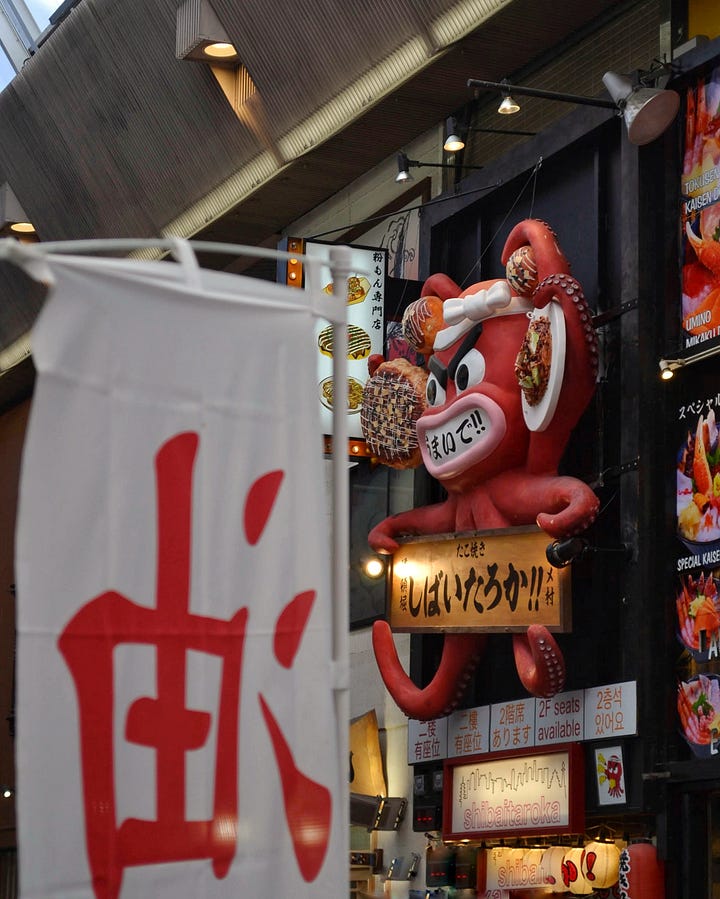
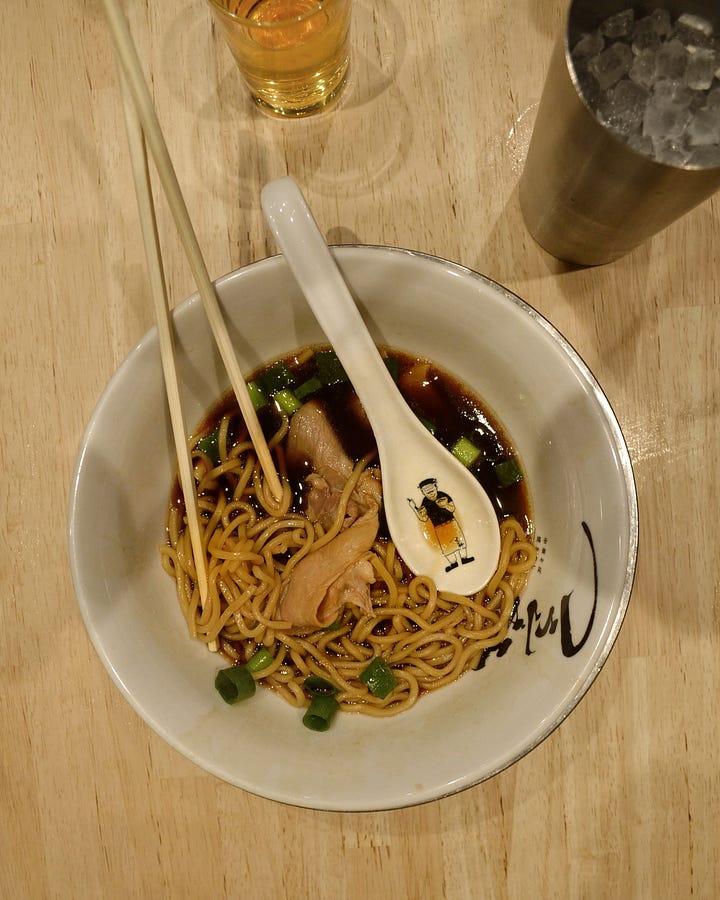
eating in japan
japanese cuisine
This sounds dumb, but we made a big effort to eat only Japanese food while we were in Japan. Spoiler alert: everything was delicious! Below is a brief list of the dishes we sampled, because if I included everything – wagyu beef! Japanese curry! Japanese pancakes! ¥10 waffle coin! cremia! so! much! more! – this paragraph would be far too long.
• tonkatsu: pork cutlet, breaded with panko, and deep fried to crispy perfection. So far beyond delicious!
• ramen: noodles in hot soupy broth, often served with sliced pork, scallions, or an egg. Especially good when the broth is pork based. Mmm, pork.
• gyoza: pan-fried dumplings, usually filled with minced pork & veg. We ate countless gyoza on our trip!
• karaage: Japanese fried chicken. Unbelievably tender, flavourful, and juicy!
• okonomiyaki: the specialty of Osaka! A savoury pancake consisting of eggs, cabbage, and the meat + topping of your choice. In our case: pork and scallions. Finished with a ridiculous helping of sauce (a mysterious delight!) and mayo.
• yakiniku: Japanese cook-it-yourself BBQ. You choose the cuts of meat you want, they come to your table raw, sliced, and accompanied with a hot charcoal BBQ of sorts. Smoky and fun!
• yakitori: a multi-course chicken skewer meal! Different parts of the chicken prepared on skewers, grilled to perfection, and served one at a time.
• in case you didn’t notice, there’s no seafood listed above, because Husband and I are staunch seafood haters. Before we departed, we received many warnings regarding the fact that neither of us eat seafood and were choosing to travel to Japan, the home of great seafood. If you’re in the same boat: we had absolutely no problems finding non-seafood options!
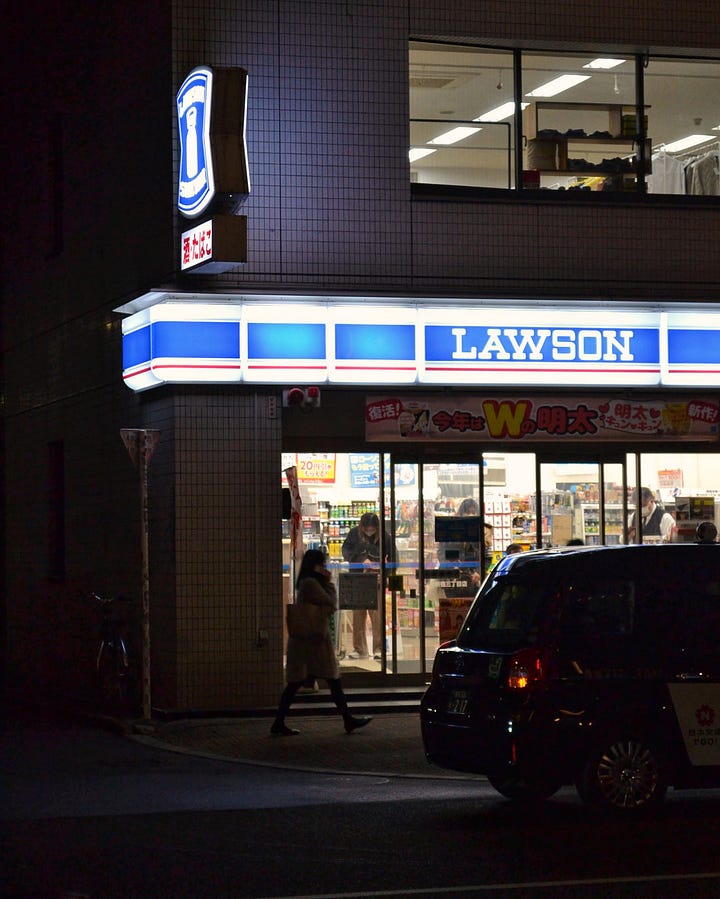
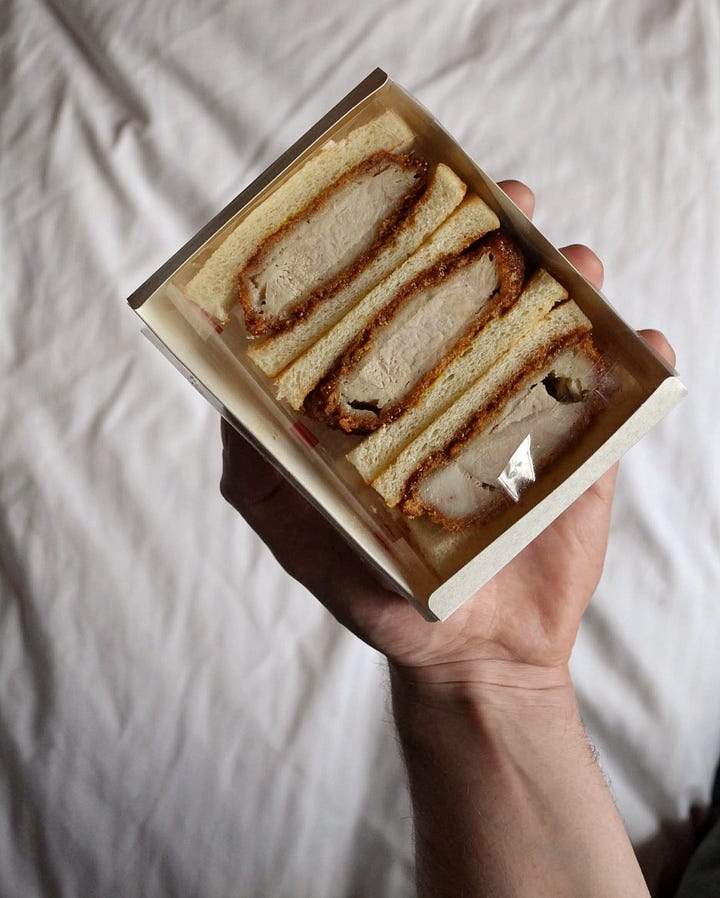
convenience stores
• convenience stores are huge in Japan. You would be hard pressed to walk down a street and not hit at least one. The main three we saw were 7-ELEVEN, Family Mart, and Lawson. To give you an example of how common these stores are, within a 5minute walking radius from our first hotel in Tokyo, there were two Family Marts, one 7-ELEVEN, and a Lawson. Wild!
• you might be wondering why I’ve dedicated a whole subsection to the topic of convenience stores – especially if you’re trying to equate them with the Irish equivalent of Spar, Centra, or the likes. Japanese convenience stores are so far removed from these, they may as well not even fall into the same category. Like everything else in Japan, the standard across the board is very high – and the food in these stores is no exception. Especially reliable for sandwiches – pork cutlet, chicken cutlet, egg salad, etc. – but also for delicious hot bites, such as karaage! Other fun snacks include: Japanese chocolate (Pocky and Crunky were our faves, but Husband also swears by the Japanese Snickers!), funky crisp flavours, unusual ice-creams, fun juices, and so on. The list is endless!
vending machines
• in Japan, it’s not uncommon to place your order at a vending machine outside the door to the restaurant. Some of the more modern ones have pictures of the food and can be switched to English, but we only encountered one like this. More commonly, they’re boxy old machines, covered in small buttons with Japanese characters and a price tag. The first time we came upon one, we watched a few locals use it before we gave it a go. You put the money in, choose the button/meal you want, and the machine prints you a small ticket. When you go inside, you give the ticket to the waiter, they seat you, and bring you what’s on the ticket.
• aside from being used to place orders at restaurants, regular vending machines are everywhere in Japan; there’s one or two on almost every corner! Most of the ones we saw sold beverages and the likes, but I’ve read about some rather unusual ones online. I excitedly tried a hot coffee from a vending machine one day, and it was so trippy! It was a cappuccino in a can, and it came out of the machine in 2-seconds flat, piping hot. Crazy! Fun fact: there are over 4-million vending machines in the country! Which works out at around 1 vending machine for every 30-ish people. Isn’t that insane?
food & drink etiquette
• even though there are vending machines/convenience stores everywhere, it’s considered rude in Japanese culture to eat/drink in public. If you do buy something from a vending machine, the proper etiquette is to stand just to the side of the machine, eat/drink your purchase right there, and then move on. The same goes for convenience store food: you eat/drink whatever you bought right outside the store before moving on.
• one exception to the no eating & drinking in public rule is long-distance train journeys. On both of our Shinkansen journeys we were surrounded by people eating the most amazing looking bento boxes. Our own Shinkansen lunches consisted of two cans of Asahi, two pork cutlet sandwiches, and a big bag of crisps between us. It was delightful! Oh yeah, pro tip: drinking alcohol in public is legal in Japan! It was so enjoyable having a beer on the train!
• fyi: public bins are few and far between in Japan. They were largely removed from the country after a poisonous gas attack in the ’90s, so you don’t really see them. The exception to this, obviously, is right outside convenience stores and beside vending machines – the two socially acceptable public eating spaces. Generally speaking, if you accumulate rubbish throughout the day, you’re meant to keep it on you and dispose of it in your home/hotel.
miscellaneous
japanese souvenirs
We aren’t normally souvenir buyers – but we could hardly go to Japan and not bring anything home! Here are a few fun things we brough back that didn’t break the bank:
• tabi socks, aka traditional Japanese socks! You know the type geisha etc. wear with their flip-flop type shoes? They’re distinctly Japanese and so fun! We bought a few pairs for family, and a couple for ourselves too.
• KitKats. In Japanese culture, KitKats are given as good luck charms! The Japanese word Kitto means ‘certainly’, and the word katsu means ‘to win’ – how fun? We picked up some flavours you can’t get in Ireland: strawberry, matcha, dark & white mixed, honey wholewheat, and cherry blossom.
• Pringles/Chip Star crisps. Who wouldn’t like some unusual flavoured snacks as gifts, right? Different flavours we purchased include: teriyaki chicken, Takoyaki octopus, butter & soy sauce, and shrimp & garlic.
• Pocky. If you haven’t had Pocky before, they’re these moreishly addictive chocolate dipped biscuit sticks that you literally cannot stop eating. We bought several boxes of both the classic chocolate and the almond crunch flavours – which we then might have forgotten to gift to family and friends
• Hokkaido milk biscuits from Sapporo. Husband came across these biscuits in Haneda airport and omg they are the best biscuits ever! They’re so milky and creamy tasting, almost like a shortbread in texture, but more buttery somehow? This is a link to the exact biscuits here, because I wouldn’t want you to miss out.
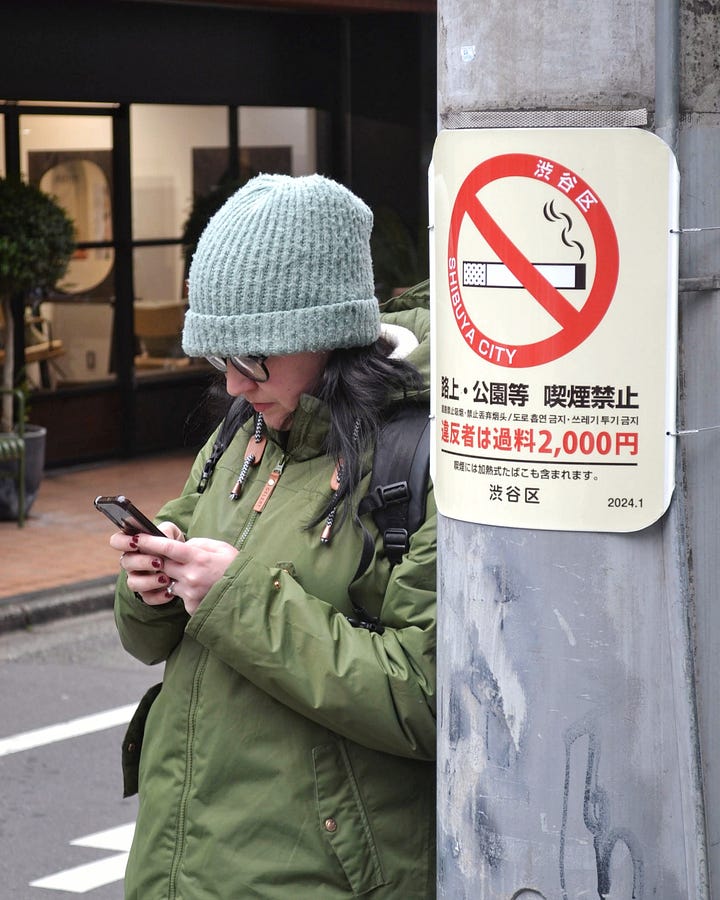
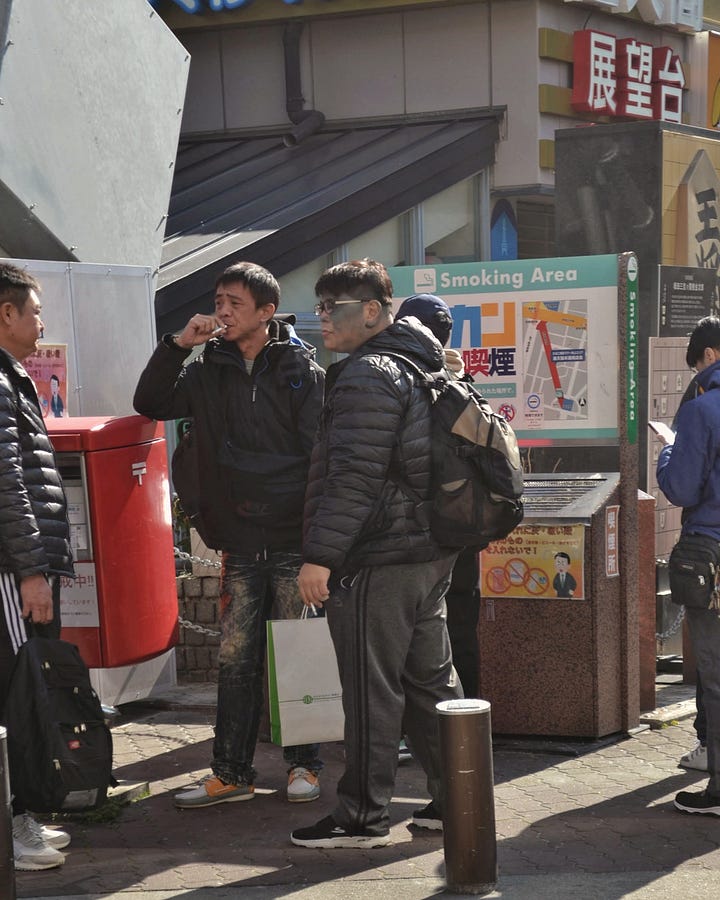
japanese etiquette
• apart from a few designated areas around town, smoking in public is banned across Japan. This was so funny to us, because you’d be walking down the street and then bam, you come along this tiny corner packed with all these smokers, puffing away together. While unusual, it’s actually kind of nice?
• following on from that, many bars and restaurants allow indoor smoking! We spent many nights surrounded by smokers in bars, and one night even sat beside a man smoking a Sherlock Holmes pipe! It was a cool experience for our short visit, but it isn’t something we’d love if we lived there.
• mask wearing in Japan is very common, and it has nothing at all to do with Covid. We didn’t wear any during our time there, but saw many others that did. It wasn’t unusual to see groups of youths hanging out at a cafe or whatever, drink their coffee, and then put on their mask and continue as normal. It’s just a regular part of their culture, and no one even thinks twice about it – which is a bit different to how people view masks here in Europe.
• on public transport, you should be considerate of everyone around you. There are signs up asking you to ensure music isn’t leaking from your earphones, so as not to disturb others. If you’re talking amongst yourselves, you’re meant to do so quietly and considerately. You should switch your phone to silent and not take any calls, etc. – you get the picture. Again, at first, I thought this was all a bit much. But when you think about it, doesn’t all of the above make for a very peaceful journey?
• overall, the main thing to take from this brief intro to Japanese etiquette is that they are very respectful people. They are truly some of the friendliest folks we’ve ever met; ridiculously helpful, patient, considerate of everyone around them, polite to a fault, and every other good thing you’ve ever heard about them. Irish people have never seemed so lackluster.
japanese toilets
I’m sorry, but this post would be incomplete without mentioning the joy that is a Japanese toilet. What a revelation! If you haven’t had the pleasure of using a Japanese toilet, allow me. They’re just amazing!
• more often than not, the toilets have heated seats. Once you sit down, you feel the seat go warm straight away. This freaked me out at first – because who likes a warm seat?! – but it’s nice once you get used to it.
• many of the toilets had a “privacy setting” button; wherein you’d push the button and loud water noises would start up, allowing you a few private moments alone.
• the main feature is the in-built bidet function. When you’re finished your business, you press a button, a little wand comes out of the toilet wall, and it sprays you clean. You control the strength and position of the water spray, and you press a button to stop when you’re ready. If you’re thinking this is gross/unsanitary, most of the toilets we saw had a self-cleaning wand feature that would automatically turn on after you’ve flushed and finished!
• other, lesser-occurring settings we came across were: automatic opening/closing/flushing and deodorizer. All of which are pretty self-explanatory, but still cool.
currency, cash & costs
currency + cash withdrawals
• the currency of Japan is the Japanese Yen, ¥. At the time of our visit in January 2024, €1 was equal to around ¥160. To calculate the conversion quickly, we knew that ¥1,000 was around €6.20, which was easy enough to work out.
• before our trip, we’d read that not all ATMs offer international cash withdrawals. Upon further research, I read that the ATMs in convenience stores (7-ELEVEN, Lawson, or Family Mart) always offer international withdrawals. This was certainly the case for us, as we never had any issues with these machines. Aside from at convenience store ATMs, we also took cash out in Haneda airport as soon as we landed. I would absolutely recommend doing this, because you’ll likely need cash to buy bus/monorail tickets.
cash is not king
• also pre-trip, we’d read online that a lot of places don’t take card payments. This, friends, we found to be entirely untrue. I would say about 90% of the places we visited took card payments, and the places that didn’t were in the minority. We always made sure to have a base amount of cash on us – around ¥16,000/€100! – but mostly used our card to pay for things. Disclaimer: although this was true in Tokyo, Kyoto, and Osaka, it mightn’t be the case in smaller cities or towns.
• from our experience, the main cash-only things were: subway machines, bus machines, and entry tickets to tourist attractions. Those first two make sense to me, but the latter boggled our minds – you would think tourist spots would be more likely to take international cards?! Anyways, I digress. Other than that it was just the odd place here and there: street food stalls, smaller cafes, etc.
cost breakdown of our trip
I’ve never before felt the need to do a cost breakdown of any of our trips – but I feel like there is a huge misconception about the cost of travelling to Japan. In our personal experience, it is nowhere near as expensive as everyone says it is! Of course, every destination can be as expensive or as cheap as you make it, but we were very pleasantly surprised with the end cost of our trip! Honestly, life in Ireland is more expensive!
• total accommodation: ¥193,308 / €1,192. Thirteen nights across four different hotels, two of which were 4-star & the other two were 3-star. All hotels were “western style”, and the rooms were nicer than the basic: styling room x1, superior room x2, and a queen room x1.
• total transport: ¥81,480 / €510. Including our two Shinkansen journeys, subway tickets, bus tickets, and the luggage service.
• total food & drinks: ¥188,357 / €1,178. Breakfast, lunch, dinner, drinks and cocktails. Bearing in mind that we were very much in treat-yo-self honeymoon mode, so we usually had an alcoholic beverage with lunch and dinner.
• total coffee/pastries/snacks: ¥20,338 / €127. Including sit-ins, take-outs, donuts, ice-creams, and anything else that caught our eye.
• total culture/tourist: ¥6,200 / €37. Most of the tourist attractions that we did in Japan were free! This small amount is for the four attractions that weren’t.
• total pocket-wifi: ¥18,000 / €115. Quite self-explanatory, I would think.
• total miscellaneous: ¥59,607 / €384. Including ATM withdrawals, souvenirs, many a convenience store purchase, and all the unaccountable other things people spend money on while holiday-ing.
• TOTAL FOR TWO PEOPLE: ¥567,290 / €3,543.
• see what I mean? If you’re putting off a trip to Japan because everyone talks about how expensive it is – and believe me, once you tell people you’re going to Japan, that’s ALL YOU WILL HEAR – just ignore them! It’s a myth!
And that, friends, brings to a close my first ever Japanese guide! What did you think – helpful? I really hope so! I know it’s a little epic, but if it helps even one person plan their trip, then it was totally worth the countless hours I spent writing it! Let me know any thoughts, comments, or questions using the comment box below. Thanks for reading, friends
Detailed Japanese itinerary coming next week!
Vicki xo
related posts
Four Days in Kyoto, Japan
Four Days in Osaka, Japan
Four Days in Shinjuku, Tokyo

